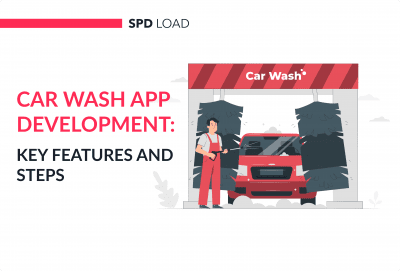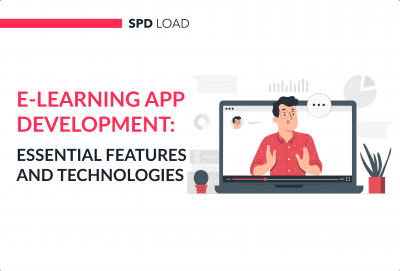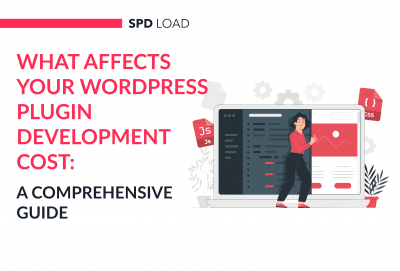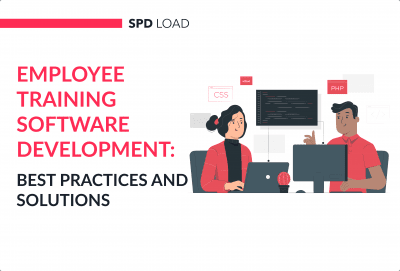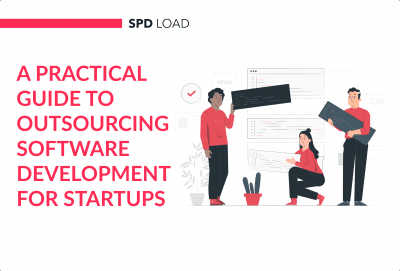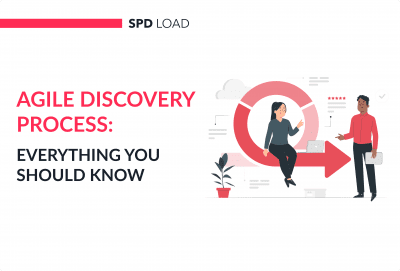Market Research: What it Is, Methods, Types & Examples
- Updated: Nov 13, 2024
- 9 min
We reside in a world that is awash in information. Rummaging through the noise to get the most relevant data about a specific audience or market might be challenging.
Market research makes way for researchers and brands to obtain information and data from target markets and consumers.
Market research is a dynamic sector that is brimming with ingenuity and innovation. It might be difficult for novices to know where to begin when learning about insights in such a bustling, forward-thinking sector.
So, here is our handbook, which delves into the ins and outs of market research that every insight and research expert should be aware of.
So why wait? Let us put you ahead of the game.
Grow your startup globally with our clear marketing plan that brings real results.
Definition
Market research is a business approach in which a company evaluates competition, market trends, and customer preferences before releasing fresh products and services.
It entails gathering and evaluating data during product creation or marketing to assist firms in making educated decisions.
The research process comprises gathering data from present and future customers via interviews and surveys to assess the demand for a given product type. In addition to presenting new items, many firms do this to define the target market while launching a new business.
A business may opt to do it themselves to pay a third-party firm to do it for them. Its goal is to provide them with a competitive edge in the market.
Conduction
Before launching fresh products and services or improving existing ones, businesses must first understand their target market’s interests, competition, and market demand. Market research is the procedure of gathering all of this data.
The company establishes an in-house research and development division, hires a market research analyst, or employs a third-party organization. Differentiation of products and market segmentation enables them to develop a successful marketing plan.
When it comes to effectively launching their goods, most firms rely on their intuition. However, this isn’t always the case. The outcomes may be unpleasant enough to demonstrate how their ideas might be incorrect.
Before we go into market research processes, let’s first grasp why the procedure is so vital for firms:
- One of its key benefits is that it employs a scientific approach to track down the solutions by employing statistical approaches.
- Effective marketing research may determine the market capability of any specific company or brand.
- Forecasting is critical to the growth of a firm. Marketing research assists in acquiring market knowledge to provide forecasting ideas.
- It aids firms in understanding their target market and deploying product creation and effective marketing strategies.
- Brands may efficiently and successfully curate the best strategies and plans by examining consumers’ buying behavior, pain points, preferences, and market trends and needs.
- The study assures that the soon-to-be-released product or service will match consumer expectations and market demand.
- It helps organizations become more customer-focused by narrowing down consumer segments.
- It estimates how better the sales will be and how lucrative the manufacturing will be.
- The research enables organizations to examine their competitor’s product performance.
Process
Marketing research collects data from many sources to detect market trends and customer behavior. The obtained data is then analyzed and interpreted to build innovative products, provide unique services, or establish new businesses.
Additionally, delving into non-trivial marketing research topics can provide valuable insights and perspectives beyond conventional market analysis methods.
So, if you are new to the business and wondering how to market your startup, —whether it’s a little company or a trading journal— don’t worry, as we’ve got you covered.
The entire market research procedure is an essential component of business strategy and aids in decision-making, ensuring you market your startup with full confidence. It generally consists of the following steps:
1. Defining the Issue
The first stage is identifying and defining consumers’ concerns with present products or services. The research and development (R&D) team must create surveys addressing such challenges for respondents to determine the best solution.
2. Deciding on a Strategy
The company must create a strategy for accurately studying market trends and consumer behavior. It might range from developing analytical models for a study design to developing website objectives and hypotheses.
3. Chalking out a Research Design
Following that, the company should explain the procedure and the final purpose of the research. The study design should encompass everything, from data collecting to data analysis.
4. Gathering and Analyzing Data
It’s the most important part of marketing research since the outcomes are only as accurate as the data collected.
In this digital age, tools like Survicate’s Hubspot surveys have become invaluable, offering seamless integration with customer relationship management systems, thereby enhancing the efficiency and effectiveness of data collection processes.
A company might utilize email strategies with questions, online surveys, one-on-one interviews, and other methods to gather client feedback.
The information gathered must be analyzed to determine how the consumers and market will react to “soon-to-be-introduced” products.
5. Communicate Outcomes
The presentation of the market research report is the process’s final phase. The higher management works on the best approaches and techniques to capitalize on the opportunity or address the issue.
Methods
Listed below are some pertinent marketing research methods:
1. Observation Method
Without any direct discussions, information is obtained immediately in this approach. It aids in determining which things an individual uses for personal use or keeps in stock in their businesses.
For instance, suppose the business was created in a neighboring region. In such a situation, observing consumers rather than phoning them and asking for their requirements delivers far more valuable information about their likes or preferences.
The shopkeeper should track which clients purchase quality or specific brand products more frequently.
There may be multiple clients who passed by the business once but returned to buy the goods because they loved them; such products should be exhibited to attract additional consumers.
2. Experimental Method
A split-on test approach is employed in this marketing research study, which implies that the best-selling goods are maintained in front of the shop.
Another example of an experimental approach is newspaper advertising published in two separate places, one on the front page and the other on the back page.
At first glance, viewers are drawn to the advertising on the first page. Likewise, advertising in white and black space is an experimental marketing research method. These experiments aid marketers in the process of decision-making.
3. Survey Method
The most common type of marketing research is the conducting surveys. Various inquiries are posed to the various market customers using this strategy.
Marketers collect data from all consumers and note their perspectives and interpretations of distinguishing variables.
However, capturing descriptive data is more trustworthy than capturing customer opinions and interpretations. As a result, surveys may be split into three categories:
Access premium design and development services for unmatched success.
Opinion Survey
The name of this survey implies that it is a survey of individual opinions on many topics. However, because rapid response is expected, there is a considerable possibility of receiving an incorrect opinion.
Descriptive Survey
A customer is directly questioned about the exact description of the brand or the product they’re using in this form of study. However, the outcome of such a survey does not have to be 100% correct.
The respondent sometimes answers incorrect questions to please the interviewer.
Interpretative Survey
A person turns out to be an interpreter in this method; yet, the personal sentiments of individuals cannot be translated since one can supply information about many areas. As a result, a person should be receptive.
However, with the advancement of sentiment analysis software, there is potential for more nuanced understanding and interpretation of emotions, enabling interpreters to better capture and convey the underlying sentiments in various contexts.
Types
Businesses collect data through feedback, surveys, or publicly available sources. They may decide whether to release new items after analyzing the data. Marketing research may be classified into two sorts depending on the available sources:
1. Primary Research
It becomes their primary source when brands interact with customers directly or through a third-party company. In such a case, they don’t depend on publicly available sources or third-party.
Instead, they gather data to understand industry trends, and customer needs better. This research type exists in two stages:
Exploratory Research
This research stage includes preparing open-ended questionnaires to track the issues experienced by customers. It aids in the improvement of existing products or the introduction of new ones.
Specific Research
Its prime goal is to find solutions to issues tracked down in the exploratory research stage. Aside from this, it also explores opportunities hinged on market trends and consumer needs.
The following data collection strategies are used in primary research:
- Distributing a questionnaire or launching an online poll to solicit customer feedback.
- Conducting surveys through the internet, in-person, or by phone regarding present and soon-to-be-introduced items.
- Interacting with focus groups through online questionnaires or in-person interviews.
- Conducting in-depth interviews via phone, one-on-one, or online.
2. Secondary Research
This marketing research collects data from publicly available resources, either offline or online.
Analysts can use numerous techniques to detect hot keywords and concentrate on them while advertising goods or services on digital platforms for online research. Keyword research gives information about the kinds of items that people seek.
The following online or offline approaches are used in secondary research:
- Obtaining information from social media, journals, magazines, newspapers, and articles.
- Using official census data, reports, and studies.
- Using trade association research reports, scholarly publications, case studies, and literature reviews as references.
3. Quantitative Research
Market research has become associated with quantitative study and statistics. Most stakeholders are accustomed to seeing statistical and numerical data in study reports.
Usually, this information is obtained by quantitative methods like questionnaires, polls, observations, surveys, as well as in-depth interviews.
Well, quantitative research puts forward measurable stats that help to quantify the attitudes and opinions of research participants.
Because quantitative research produces statistical results, researchers may objectively test ideas and evaluate the opinions of their target market.
Surveys are frequently the first thing that comes to mind when someone mentions quantitative research since they are the most often employed quantitative research strategy outside and inside the insights sector.
To infer meaning from data points on tables and graphs, uncover correlations without attributing them to causations, and either prove or disprove the latest hypothesis, quantitative data analysis is stated to be a very logical procedure that involves a thorough grasp of statistical analysis and mathematics.
4. Qualitative Research
What images come to mind when you consider qualitative research? Other than the interview-based research and standard focus group approaches? Probably not much!
These were arguably the most commonly employed together with surveys right through market research history. It wasn’t until the last couple of decades that stakeholders and researchers had other alternatives.
Online focus group technology is driving stakeholder efforts to conduct more online qualitative focus groups, thanks to the push of technological progress and the necessity fueled by the events of 2020.
However, focus groups are not the only option to examine. More imaginative research approaches can produce just as excellent data with perhaps more interesting outcomes.
Sentiment-based heat maps, scrapbooks, diary studies, and other methods are well positioned to accelerate the development of rich contextual insights in research encounters, enhancing quantitative data more than basic focus groups ever could.
Focus groups may not be the best way to get more contextual information from survey data, depending on stakeholders’ insights. Or, at the very least, not on their own.
To generate the correct insights for their stakeholders, insight teams can leverage data integration tools to get a centralised view of research tasks, and procedures.
Find the best TypeScript developers for your project.
Market Research Examples
Here you will get to know two examples associated with market research:
Example #1
Thomas distributed her handcrafted soaps to relatives and friends to obtain feedback before deciding whether to sell them. They responded well, but he decided to conduct a bit more study.
He surveyed her social media channels to see how many people preferred homemade soap. He studied reviews for similar things on eCommerce websites at the same time. It aided him in understanding what people desired. Looking to launch an eCommerce business? Check out these eCommerce startup ideas for fresh inspiration.
His marketing study discovered that customers appear content with handcrafted soaps, but only if the soap packaging is eco-friendly.
As a result, Thomas chose to concentrate on packaging design while keeping market viability and customer behavior in mind.
Example #2
First Book, a not-for-profit social firm, established the First Book Research & Development Insights research section to understand better the value of human-oriented design in the social sector.
It intends to perform marketing research to get insights into enhancing educational fairness by reducing learning obstacles.
The data contains comments from instructors from under-resourced schools and organizations serving underprivileged children of ages 0 to 18.
Curriculum developers, organizations, and academics use this data to build strategies and provide human-centered design solutions to underprivileged children.
Conclusion
Market research requires time, effort, and money to perform, so it makes sense to invest these resources only if they yield a favorable return. Market research is still crucial in running a prosperous business since it is well worth the expense.
Of course, it will not guarantee your company’s success but will provide you with the information you need to make intelligent decisions that will propel your company forward.
If you are looking for ways to elevate your email strategy, our email marketing for startups tips are here to help you communicate effectively with your audience.




